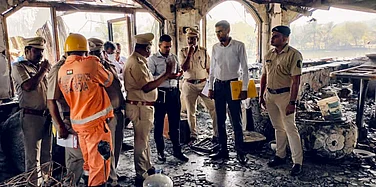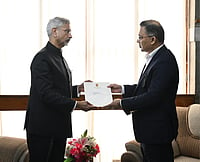At the time of Telangana's formation in 2014, there was a deficit of 2,700 megawatts in electricity demand. During the 60 years combined rule, our coal and water resources were illegally diverted, and power plants were constructed in other areas. By the time Telangana was formed, power plants with a generation capacity of only 7,778 megawatts were operational. Per capita electricity consumption stood at a meager 1,196 kilowatts. The construction of electricity substations and power lines was not sufficient to meet the demand. The result was frequent power cuts, leading to agricultural motor and transformer failures, causing severe damage to the agriculture sector and the rural economy. The power shortages also forced industries to remain closed, compelling farmers and laborers to migrate for survival. This was the grim situation at the time of Telangana's formation.
The progress made by the power sector over the last 9 years stands as a testimony to the vision and effective governance of Chief Minister K Chandrasekhar Rao. During these 9 years, the Telangana government has invested Rs. 97,321 crores to expand and strengthen the power generation, supply, and distribution systems, which were previously neglected and discriminated against. As a result, the power generation capacity has impressively increased from 7,778 MW to 18,567 MW. An additional 10,789 MW of power generation capacity has been added, with increased production capacity in thermal and solar power generation. Notably, neglected power stations like Kakatiya Thermal Power Station, 6x40 MW Lower Jurala hydropower station, and 4x30 MW Pulichintala hydropower station were completed under the Telangana government's proactive efforts. Furthermore, the 800 MW Super Critical thermal plant at KTPS was constructed in a record time of 48 months, showcasing the state's commitment to rapid development. The upcoming Yadadri Power Station with a capacity of 500 MW each of 5 units being built with an investment of Rs. 34,400 crores in the public sector at Damaracharla of Nalgonda district, is set to contribute to power production by the end of 2023.
The government has also taken decisive steps to strengthen the power supply and distribution systems to meet the increased production capacity. The number of 400 kV, 220 kV, and 132 kV power transformers has been increased, and the length of high tension lines has been significantly extended. The power supply system capacity has now reached 39,345 MVA.Mass expansions have been carried out for 33 kV and 11 kV substations, along with low tension power distribution lines. Telangana has earned recognition as the state with the best power supply system in the country by establishing the State Load Dispatch Center using modern technology, ensuring continuous quality power supply to all sectors. This system has successfully met the peak power demand, which reached 15,497 MW in March 2023. To further enhance power stability in Hyderabad city, an "Island System "has been implemented to overcome power supply gaps during grid failures. Modern "Ring Main Systems" have also been installed at 400 kV, 220 kV, and 132 kV levels to prevent power interruptions in Hyderabad city.
The continuous supply of quality power has led to a golden age in the agricultural sector of Telangana. During the past 9 years, 8.46 lakh additional agricultural electricity connections were established, raising the total number of connections from 19.03 lakh in 2014 to 27.49 lakh. Furthermore, an additional 67 lakh electricity supply connections have been provided to all sectors, bringing the total number of electricity connections in the state to 1 crore 78 lakh.
The Telangana government's steadfast measures to develop the power sector have played a crucial role in facilitating the state's all-round development. The discrimination faced during the 60 years of combined rule has been put to an end. With the construction of power-generating stations, substations, and supply lines, Telangana has made significant progress, with an average per capita electricity consumption of 2140 units, surpassing the national average of 1255 units by 70%.
This remarkable progress in the power sector is a testament to our abundant resources, efficient governance, and the visionary leadership of Chief Minister K Chandrasekhar Rao.


























